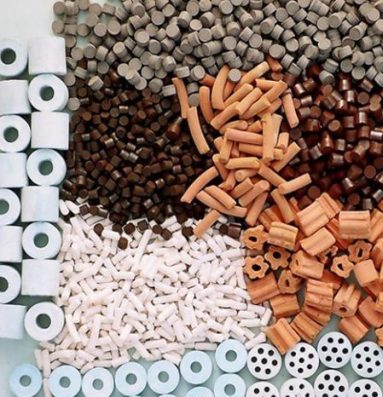Isomerization unit catalyst
The low-temperature isomerization catalyst is based on sulfated zirconia and is primarily used in refinery processes within the isomerization units, applied to lighter cuts of naphtha and gasoline.
Category: chemical-products
Tags: Isomerization catalyst, Laboratory Equipment Tab, Process catalysts
The low-temperature isomerization catalyst is based on sulfated zirconia and is primarily used in refinery processes
within the isomerization units, applied to lighter cuts of naphtha and gasoline.
Advantages and Features:
- Resistant to the presence of sulfur, nitrogen, and water in the feed, minimizing the need for feed purification and
- having no impact on catalyst performance or the final product.
- Catalyst activity and conversion rate are comparable to conventional feeds with chlorinated catalysts based on
- alumina oxide.
- No need for a chloriding agent (perchloroethylene) to stabilize catalyst activity.
- Very high selectivity, which reduces hydrogen consumption and lowers low-octane compounds in refinery feeds.
- Resistant to feed rate changes (range of 0.5 to 3 h⁻¹).
- Catalyst can be regenerated after the initial usage period (5 to 6 years) and reused for an additional 3 to 4 years
- without any loss in activity.
- The catalyst’s useful lifespan is estimated to be around 10–12 years.
هیچ ویدیویی برای این محصول موجود نیست.


